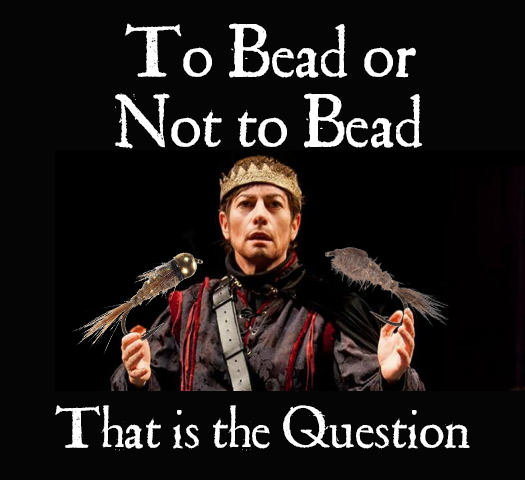
To Bead or Not to Bead: When to Fish Weighted vs. Unweighted Flies

“When should I use a beadhead fly vs an unweighted fly?” is a question that I receive from anglers at least 50 times a year. For most wet fly, nymph, and larva patterns there are both weighted (topped with a brass or tungsten beadhead) and unweighted options and each variety has its own unique strengths. There are particular tasks and conditions in which each type of fly will perform better. Similar to the tools of a craftsman, they will have a framing hammer for heavy, hard-driving work, and a smaller finish hammer for precise, delicate jobs. Among the tools of the fly fisher’s trade are weighted and unweighted nymphs, and in this article, we’re going to break down when and where to use each type to the maximum effect.
When to Use Beadhead or Weighted Fly Patterns
- When you fishing deep water or a strong current - Beadhead flies are the hard driving, fast diving flies that are akin to the framing hammer in the fly fisher’s toolbox. Beadhead patterns are perfect for fighting strong currents and help the angler to quickly reach fish hunkered among the rocks on the bottom of a river. While beadheads can be effective on streams of every size throughout the year, they are the best choice when fishing during runoff or after a big rain.
- When you want to simplify your nymphing rig - Beadhead fly patterns are a great alternative to line tangling and debris snagging split shot. Whether you are fishing a traditional American Nymphing rig with your heaviest fly tied closest to the leader or a Euro rig with your heaviest fly on the bottom of the rig, incorporating your weight into the fly pattern will help you to more clearly detect the subtle bites of fish.
- When you are fishing short pools and tight habitat – One of the most common errors of the fly fisher is not getting deep enough and drifting our flies over the fish. When fishing short, deep pools or when your cast and drift might be constrained by over-hanging cover, tying on a large beadhead or tungsten beadhead pattern will allow you to drop quickly into the head of the pool to drift the entire length of the feeding zone on the bottom of the river.
- When you need to spark the fish’s attention – Today, beadheads come in every color of the rainbow, from a natural yellow brass to fluorescent orange. A shiny metal or painted beadhead will help to increase the visibility of your fly in murky water and help to grab the attention of feeding trout.
When to Use Unweighted Fly Patterns
- When finesse is needed – When a light touch is needed and fish are skittish, it is time to tie on an unweighted nymph. Trout become more alert and on guard in waters where they are heavily pressured by anglers, when water levels are lower (late summer through the winter), and when the sun is high over the water. Under these conditions, trout will often be spooked by the “plop” of a beadhead splashing into the water or be alerted by its flash. When pursuing shy fish, lose the beadhead and tie on an unweighted fly.
- When fish are feeding on emergers – Fish follow the food, and when aquatic insects push off of the bottom of the lake or river and swim towards the surface, fish will rise in pursuit. When fish start feeding on these insects in the top 12 inches of the water column, using an unweighted fly will keep you in the zone and in the action!
- When fishing under a bright afternoon sun – While beadheads can help to improve your fly’s visibility early in the day, around dusk, and on overcast days, the flash and blink of a metal bead can become too much for trout as the sun beats down directly into the water at midday. If you have been fishing a hot beadhead pattern in the morning and the bite turns off as the sun rises overhead, switch to an unweighted variety and see if that doesn’t heat things up again.
To bead or not to bead, that is the question, and you have the answer! Both beadhead and unweighted nymphs are vital tools in the fly fisher’s arsenal that when used in the right conditions and scenarios, will allow you to consistently catch more fish!



